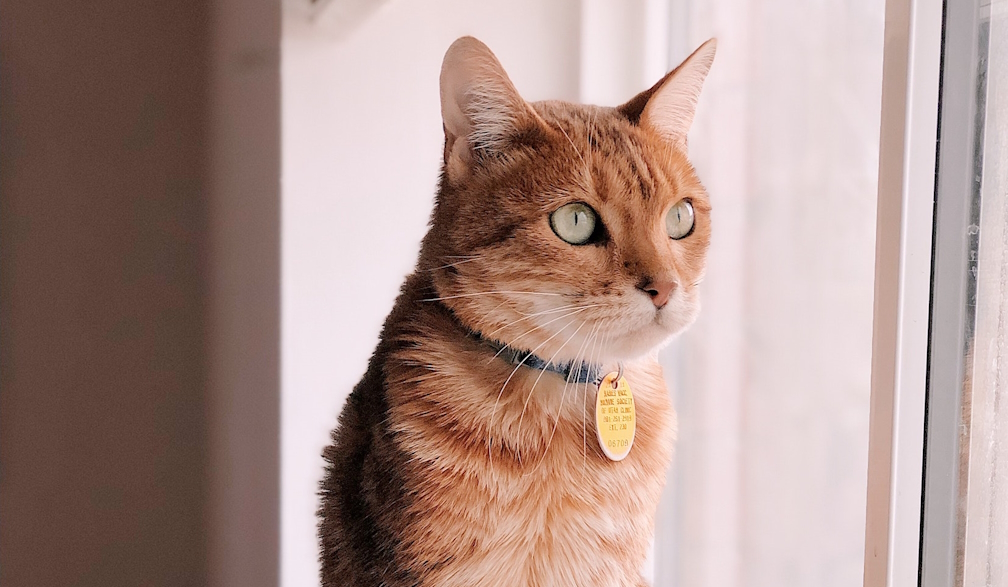The Lowdown on Cat Curfews

CAT CURFEWS AND HELPING YOUR CAT TO COPE
Australia has one of the highest rates of pet ownership in the world, with over a quarter of Australian households owning a cat. There are approximately 6.5 million cats across Australia, covering some 99% of the total landmass, and pet cats account for 3.77 million of the total cat population.
Sadly, pet cats in Australia collectively kill 530,000,000 animals per year, with many species now extinct because of predatory events.
With a number of councils introducing cat curfews in recent months, some cat owners might be wondering how to make the transition smooth for their feline friend. You might wonder how your cat will adjust to being confined to your property, and what you should do if you feel like your cat isn’t coping as quickly as you’d like. The Cat Protection Society of Victoria has developed some helpful tips on what cat owners can do to help their cat transition to the adjustment, and any warning signs that they should look out for to highlight that their cat may be struggling with the transition.
Why a cat curfew?
A cat that is allowed to roam free has an average life expectancy of only four years, compared to a cat that is confined which has fifteen years plus, so the benefits to a cat are enormous.
Addressing cat roaming with cat curfews helps to control overpopulation in cat colonies, which often result in extensive loss of wildlife and illness for the cats. There are also positive welfare outcomes for pet cats.
“We recommend that any cat adopted from our Society is kept indoors or within the owner's property, in a cat enclosure or suitable fencing,” says Emily McLeod, Cat Protection Society of Victoria’s Shelter Manager and Veterinary Nurse. “When your cat leaves your property, you have no idea what’s on the other side. For example, you don’t know if there’s an angry dog, or if your cat sees a possum and attacks it. They might also kill wildlife, so it’s for every creatures’ safety.”
Breaking down the Benefits
There are a number of benefits to keeping your cat confined, including:
- A reduced risk of them being injured or hit by a car
- Less chance of them fighting with feral cats or contracting a disease, such as cat flu, ringworm or Feline Immunodeficiency Virus (FIV) from another cat’s bite
- Protection from being accidentally poisoned by toxic plants or baits in neighbouring gardens or being bitten by snakes or spiders
- Reduced risk of your cat getting lost, or being exposed to extreme weather
How to help your cat adjust
“It takes most humans a few months to change a habit in their usual routine so expect that you’ll need to help your cat for a minimum of 30-60 days. Allow as much time as possible to ease your cat into the transition - especially if they have been coming & going freely for years,” Emily says.
Her tips include:
- Keep a diary to learn your cat’s current routine (baseline) prior to making changes. Note times of the day they particularly want to be outdoors and why. For example, maybe it’s access to a favourite sunny spot or first thing in the morning to toilet.
- Fresh air and natural light is essential for all cats. Cat-proof fencing, Catios and enclosures allow cats unsupervised time outdoors. Did you know we can also teach cats to come when called + wear a harness & leash? Research options and consider the best one for your cat - make sure it’s a big, bulky one that looks like a dog harness.
- If your cat predominately toilets outside in the garden and they will be confined indoors more, refresh their use of the litterbox. Lots of cats hate the small litterboxes that are commercially available, so it can be useful to trial a much larger litterbox (an underbed storage tub works well for this). Lots of cats prefer a clean toilet so ensure you’re spot cleaning at least twice a day - otherwise they’ll find another area of the home they deem suitable!
- Set up your cats’ space with the things they need - high perches, sturdy scratching trees, places to hide, interactive toys that encourage them to use their body and mind.
- Ditch the food bowl & start tricks training. Cats have bursts of playful ‘hunting’ behaviour and a great outlet is hiding their food in enrichment toys.
- Use play, favourite toys and foods to teach your cat new tricks. Doing this for 5mins a day is a great outlet for pent up energy that otherwise could manifest in disruptive behaviours. Remember that toys don’t have to be expensive – even a cardboard box can be fun!
- Start by confining your cat to your property/home for small chunks of time initially. Leave your cat with some interesting activities to keep occupied. Build up the amount of time gradually. It can be helpful to start by confining your cat during a time of day they’re taking a nap or relaxing.
If you feel that your cat isn’t coping with the changes, speak with your vet or a cat behaviour professional because there are a number of products available to support cats that are experiencing stress.
To learn more about the Cat Protection Society of Victoria, and to see the cats and kittens currently have available for adoption, please visit https://catprotection.com.au/
To listen to the Purrfect Podcast, visit https://catprotection.com.au/podcast/

















